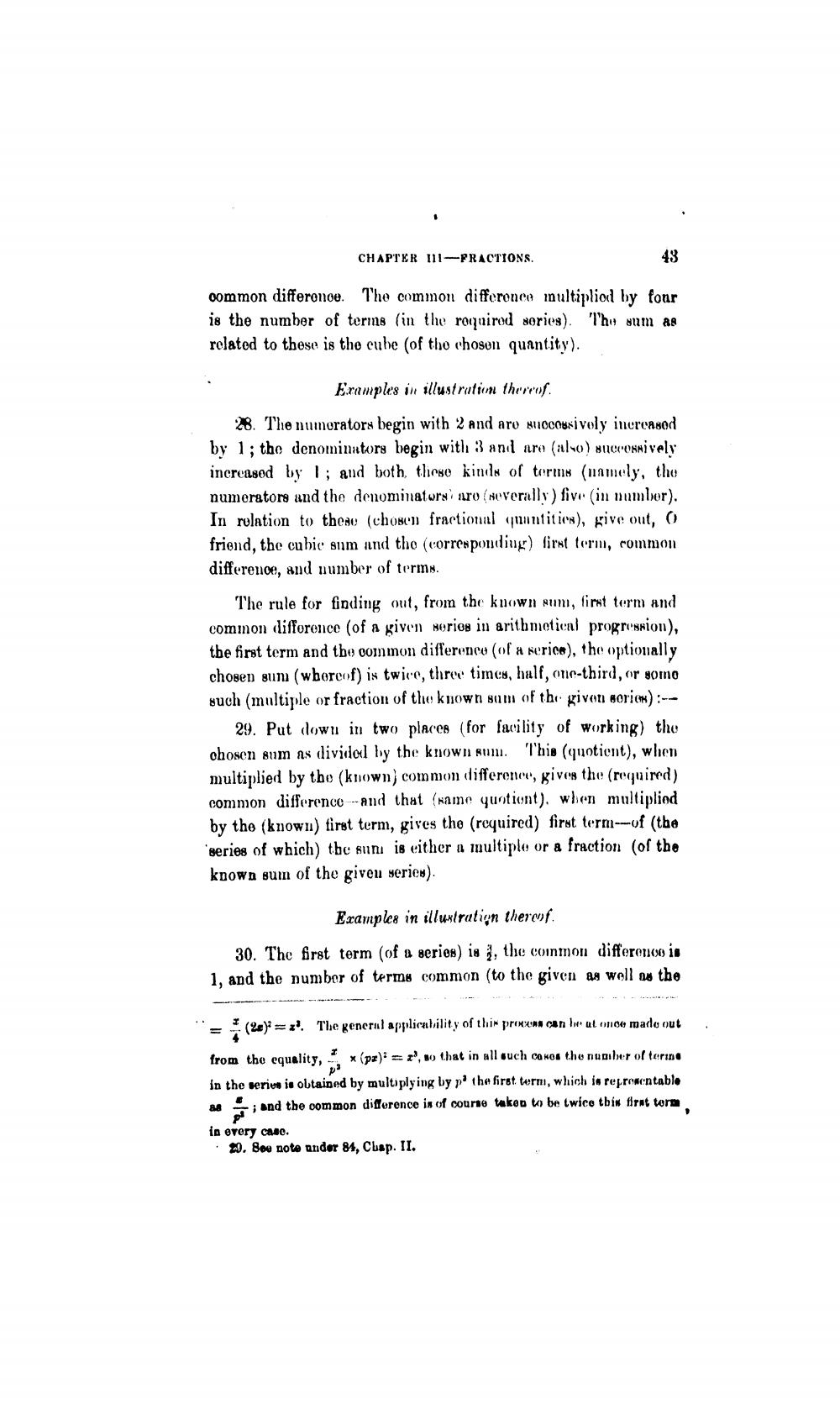________________
CHAPTER 11-PRACTIONS.
common difference. The common difference multipliod by four is the number of terms (in the roquired sories). "The sum as related to these is the cube (of the chosen quantity).
Eramples in illustration thereof. 28. The numerators begin with 2 and aro muiocoksi voly increased by 1; the denominators begin with 3 and are also) NUCrosnively increased by l; and both these kinds of terms (namely, the numerators and the denominaturn aro (severally ) five in mumlor). In relation to these (chon fractional quantities), vive out, 0) friend, the cubic sum and the corresponding) first term, common difference, and number of terms.
The rule for finding out, from the known aum, first term and common difforence (of a given series in arithmetical progression), the first term and the common difference (of a serice), the optionally chosen gumi (whoreof) is twice, three times, half, one-third, or somo such (multiple or fraction of the known some of the givon series) :--
29. Put down in two places (for facility of working) the chosen sum as divided by the known sum. This (quotient), when multiplied by the (known) common difference, gives the required) common difference and that name quotiont), when multiplied by the (known) first term, gives the (required) first tern--of (the series of which) the sun is either a multiple or a fraction of the known sum of the giveu series).
Examples in illustration thereof. 30. The first term (of a series) is ], the coinmon difference in 1, and the number of terms common (to the given as well as the
= (26)* =* The general applicability of thin pronunn can be utonou mado out from the equality, *(px) = ', so that in all such canot the number of terte in the series is obtained by multiplying by po the first term, which is refrowentable
and the common difference is of course taken to be twice this first torm in every case.
20. See note ander 84, Chap. II.




